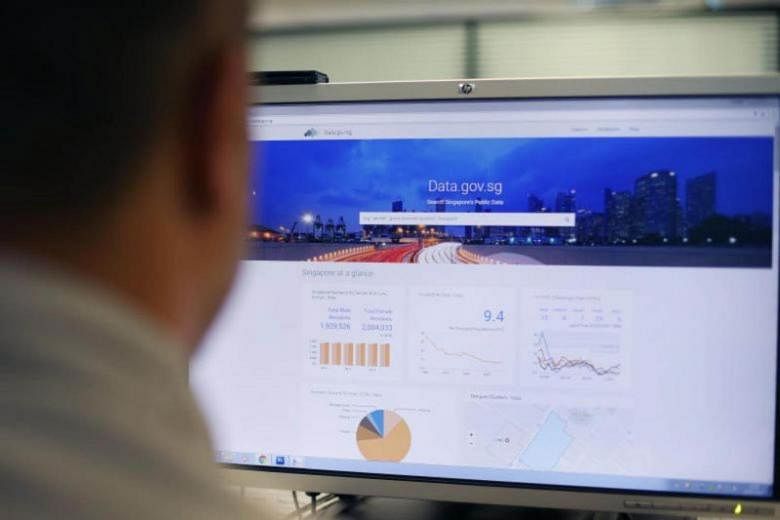SINGAPORE - Whether Singapore can be a vibrant Smart Nation, delivering better government services to citizens and companies and better jobs in the digital economy, will hinge crucially on whether Singapore has a strong digital defence, said Minister for Communications and Information S. Iswaran on Friday (Feb 15).
Citing various threats in the digital domain such as malicious cyber attacks, online scams and widespread circulation of false rumours, he said the digital readiness of Singaporeans is being strengthened so that the benefits afforded by technology can be shared by all.
"Whether we succeed or fail in this important endeavour will depend critically on whether we also have a strong digital defence in place," said Mr Iswaran, as he referred to Singapore's Smart Nation vision that seeks to better leverage technology in the economy, Government and the society.
He was speaking at a Total Defence commemoration event at Fort Canning Green, where he launched a digital defence campaign logo and tagline, "Be Secure, Alert, and Responsible Online", with Senior Minister of State for Defence Maliki Osman.
In October last year, Defence Minister Ng Eng Hen hinted that digital defence could be added as the sixth pillar under the Total Defence framework, and he confirmed the move in his annual Total Defence Day video message on Thursday (Feb 14).
It is the first time a new pillar has been added to framework since it was introduced 35 years ago in 1984.
Fort Canning was chosen for Friday's commemoration event due to its historical significance, as the British made the decision to surrender to the Japanese in one of the bunkers at Fort Canning Hill in 1942 during World War II.
Total Defence Day is commemorated on Feb 15 every year to mark the day Japanese invaders took over the country.
At the event, Mr Iswaran witnessed a weapon presentation ceremony for recruits from the Commando Training Institute - the first time commando recruits were presented with their SAR-21 rifles in a public venue.
In his speech, he said the stark memories from the Japanese invasion were a reminder of the importance of a strong Singapore Armed Forces and that defending Singapore includes various aspects.
These include a strong economy, living harmoniously with people of all backgrounds, and forging a resilient society with a strong shared Singapore identity, which are encapsulated in the five pillars of Total Defence - military, civil, economic, social and psychological.
But now, Singapore must also beef up its digital defence by stepping up safeguards against new threats of the digital age, which come in the form of online scams, fakes news and cyber attacks, among others, he added.
For instance, he cited how false claims about the disruption of a Thaipusam procession in January 2018 by a police officer and a member of the Hindu Endowments Board were spread widely online and could have caused problems along racial or religious lines.
Also, he added that digital threats are "not as easily discerned" as conventional ones, with hackers being able to enter systems with users being aware only when something dire occurs.
"And it will only get more difficult to distinguish truth from falsehood, as artificial intelligence exacerbates the spread and seamlessness with which 'deepfake' images and videos can be created," he said.
On putting digital defence into action, Mr Iswaran said that everyone has a part to play by practising secure cyber-security habits, staying alert against online falsehoods, and being responsible online when disseminating information, calling it a whole-of-nation effort.
He pointed out that whether a hacker can break into critical systems here depends on the weakest link and the individual's level of cyber defence, and whether a malicious perpetrator can fan distrust through fake news depends on the level of digital awareness and resilience among Singaporeans.
"Ultimately, the individual citizen is on the front line of digital defence, and we each have a critical role to play by being secure, alert, and responsible online," he added.
One of the initiatives launched to support the digital defence pillar is a new cyber-security theme for the Infocomm Media Development Authority's Lab on Wheels programme.
The buses which run hands-on activities aim to visit two secondary schools a week. It teaches students how personal data can be extracted from social media accounts, how to create a strong password, and tips on identifying phishing e-mails.
With the current Total Defence logo having five arrows that represent the other five pillars, a logo competition will be held later this year to reflect the change. The new logo will be unveiled in 2020.


